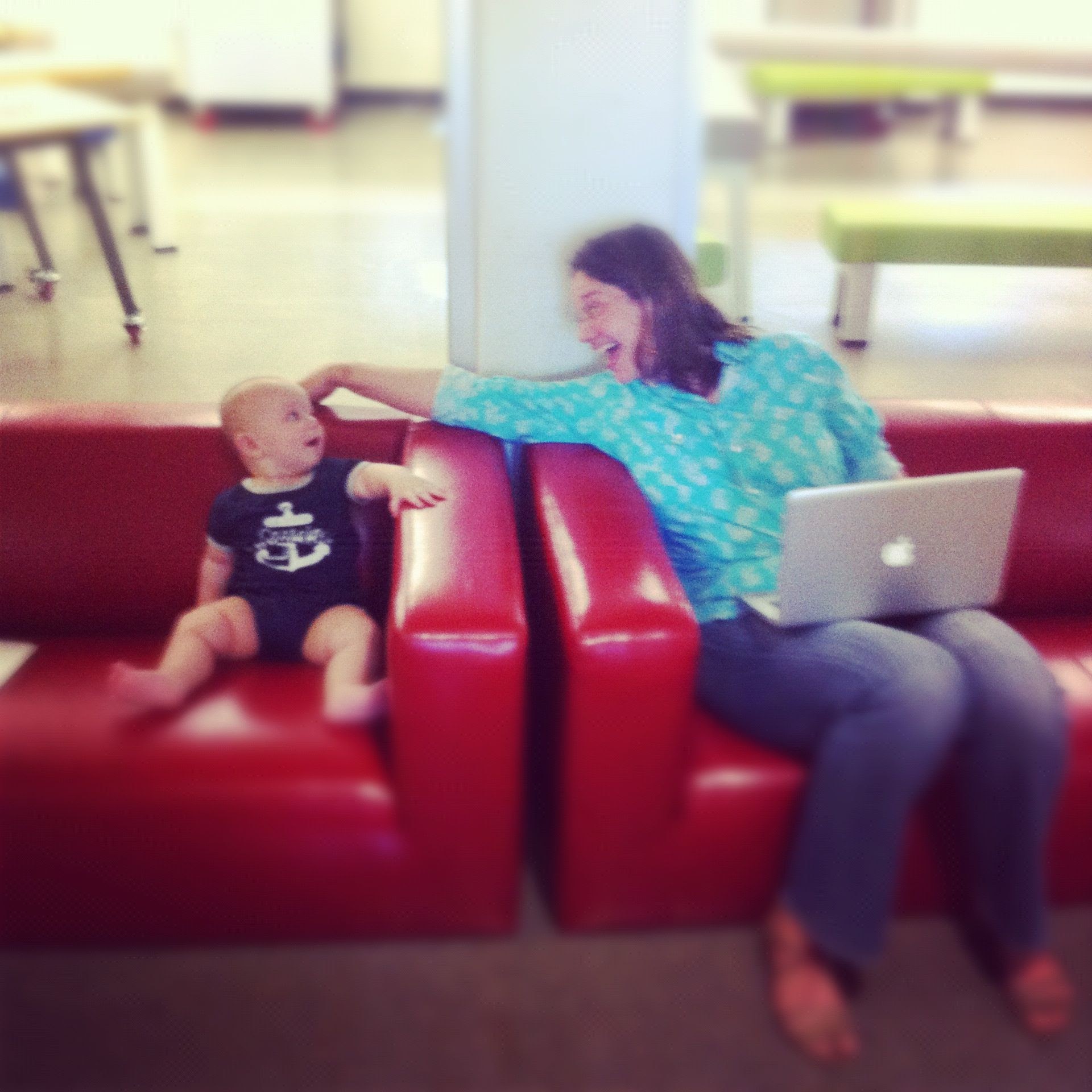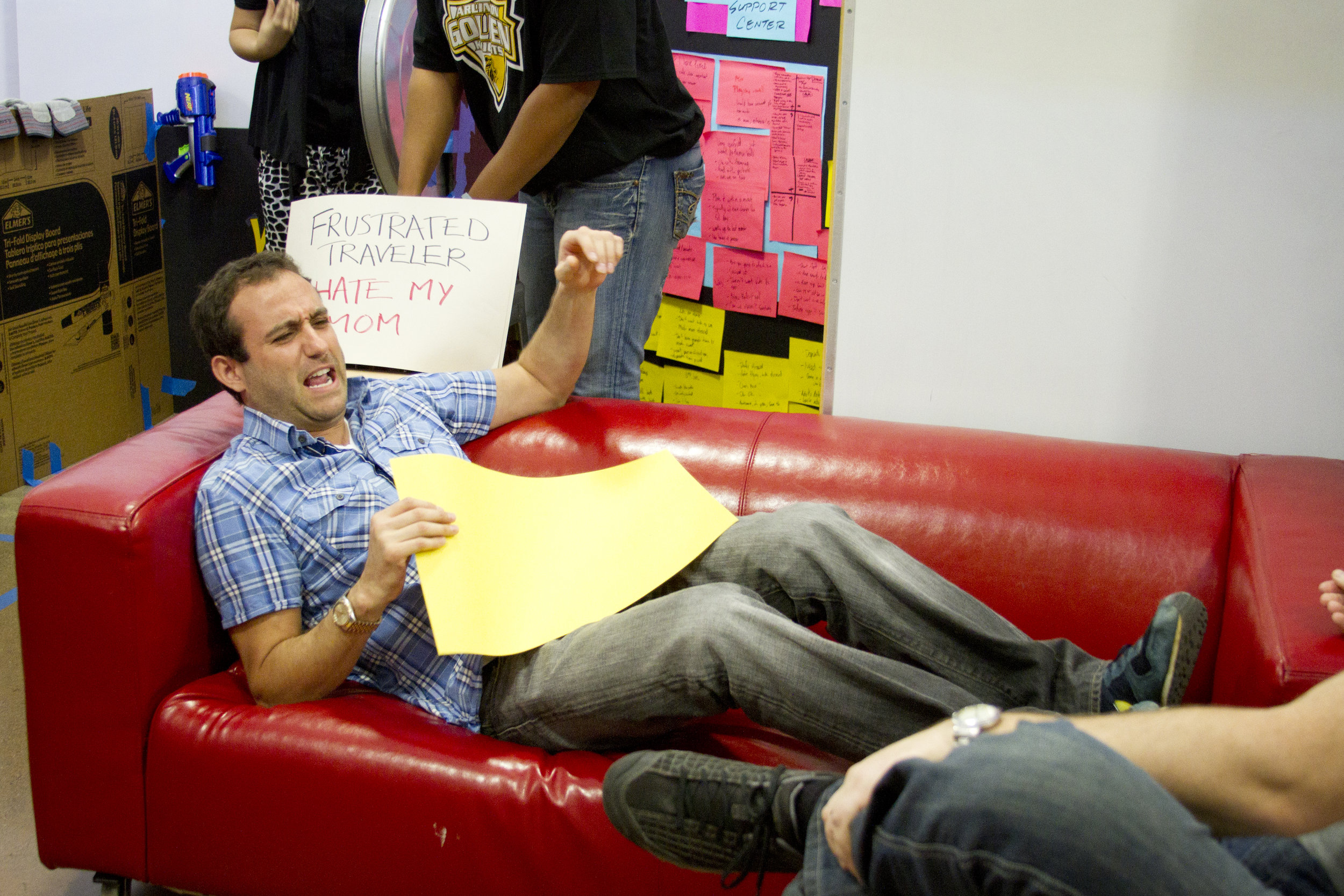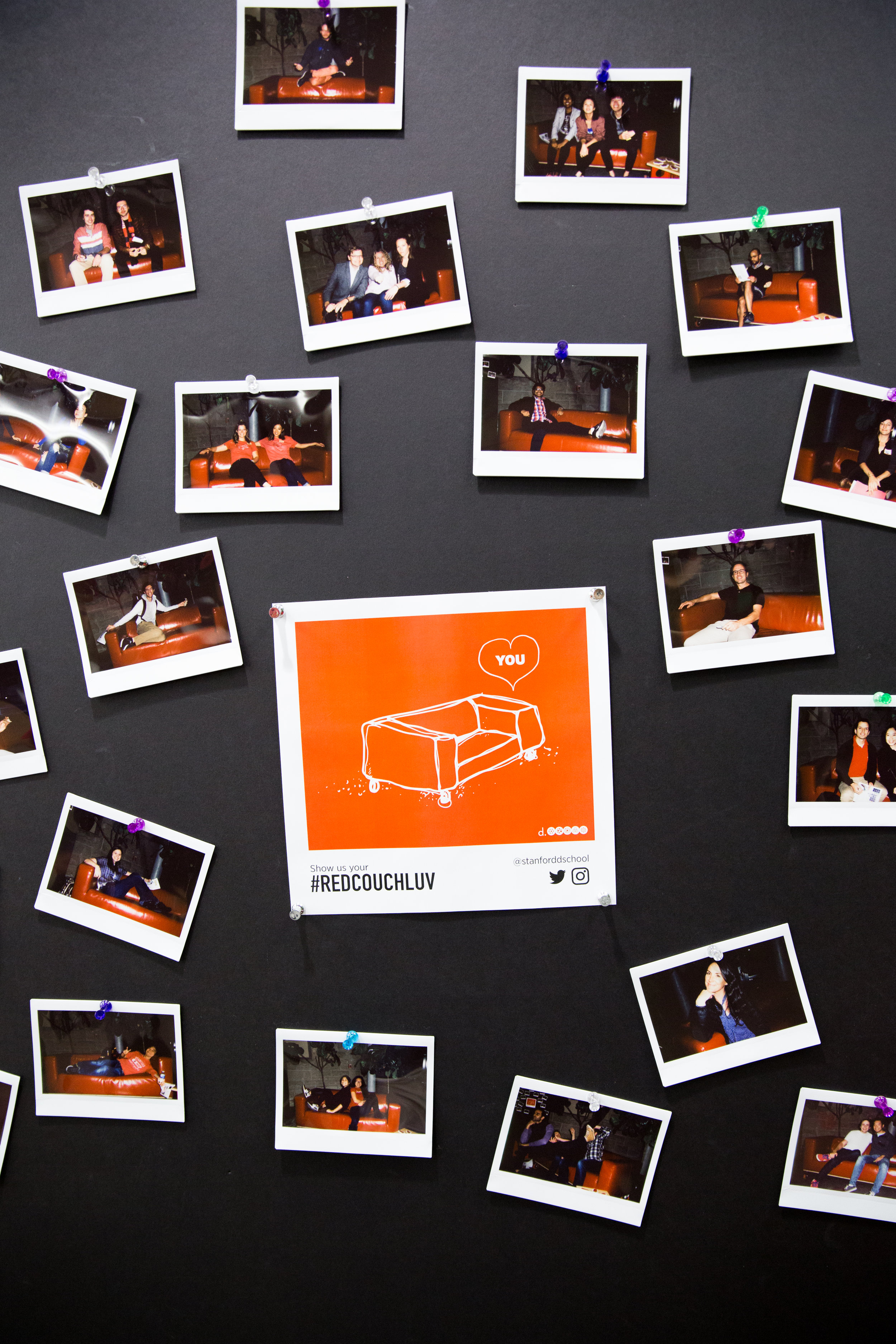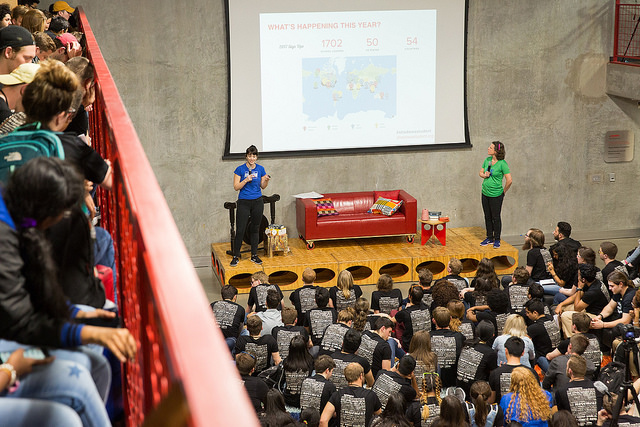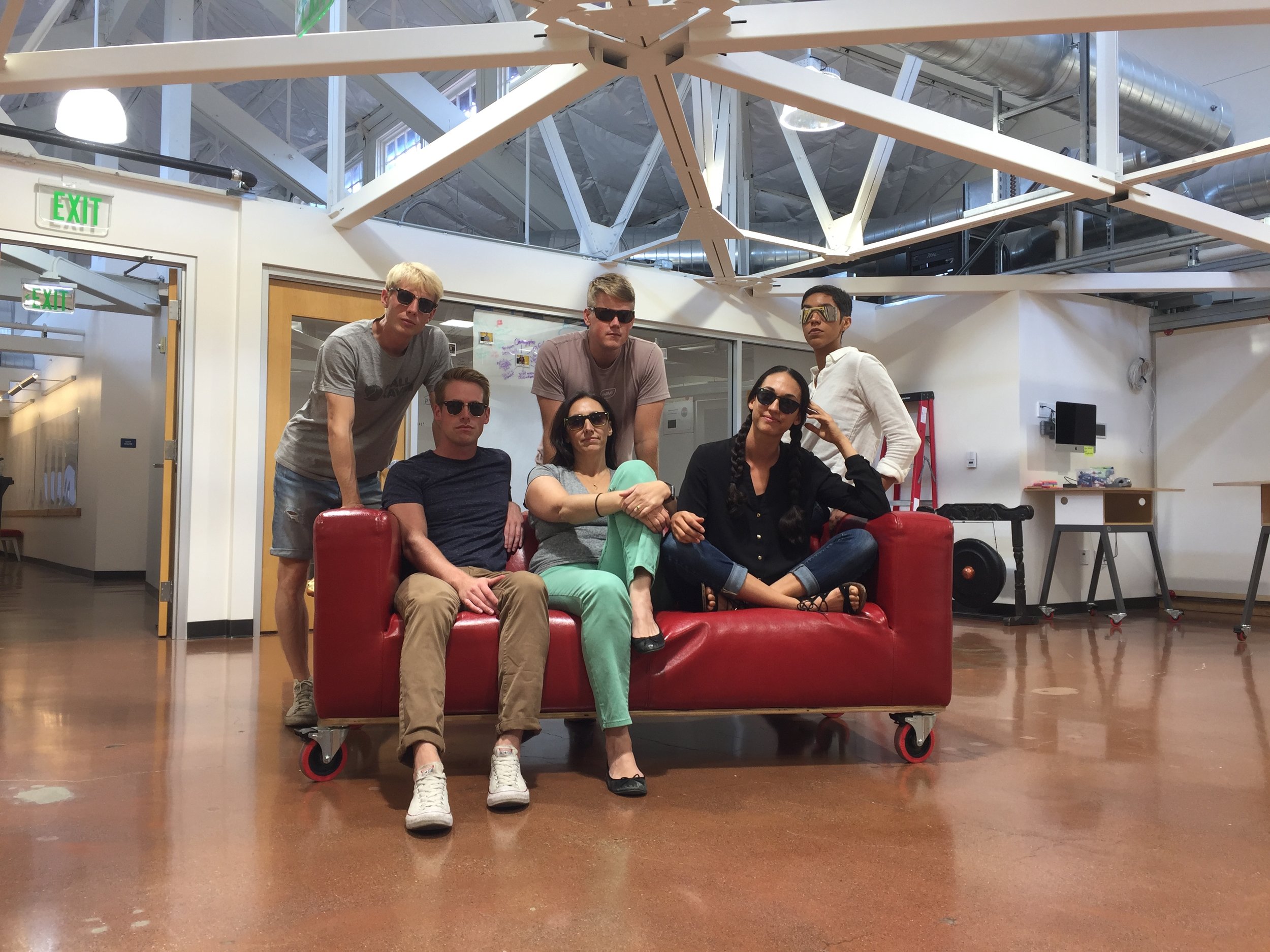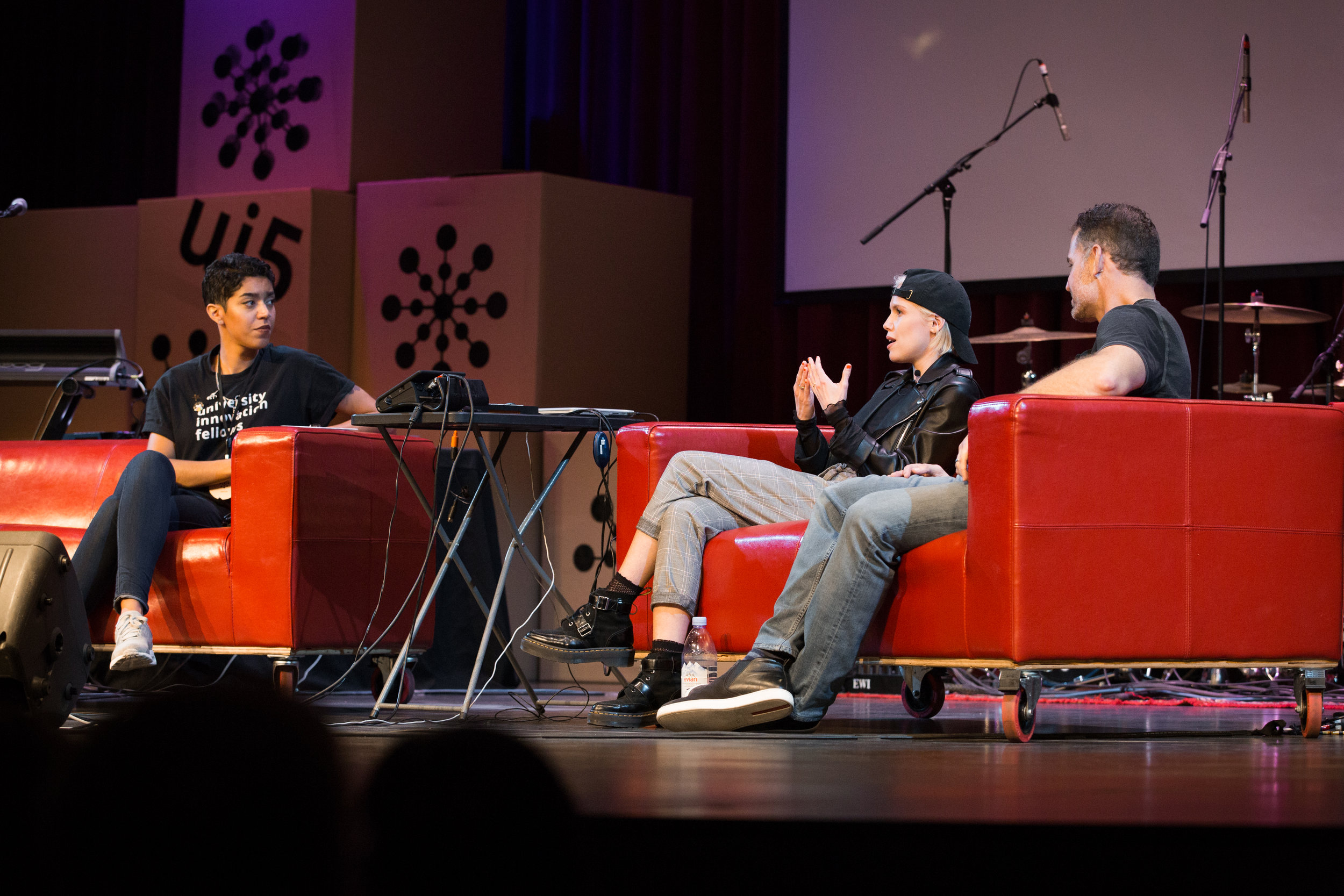Sometimes, good things come to an end. If you’ve taken a class or workshop at Stanford d.school, chances are you’ve experienced the red couch. There's also a chance you didn't know it's an important part of our history. Watch our video to find out why we're saying farewell to our beloved red couch.
Charlotte, what’s your role at the d.school and connection to the red couch?
I have the very great honor of being one of the people who first brought the red couch to the d.school. I’m the d.school’s Director of Community, a title I made up on my first day at work in 2005— to try and make it seem like I was someone important so that I could attract students to the d.school while also asking a lot of favors from folks in the administration. I am an experience designer at heart. I create opportunities for our communities of students, teaching teams, and staff to connect with one another. I use everything in our environment at my disposal to create the optimistic, fun, authentic, low-resolution, high-touch culture that the d.school is known for.
““The red couch is a bright physical reminder to keep ourselves in a design mindset. For us, it’s become a symbol of design thinking and design doing.””
““The red couch is our longest living prototype.””
I see that all of the couches have wheels, actually, most of the furniture at the d.school are on wheels...Why is that?
The d.school moved 4 times in 4 years. As we grew, we knew the each of our spaces was a prototype for the next one—we were always thinking ahead to the next size up. Every space we had available to us was a little smaller than what we actually needed. To run the variety of classes, events, workshops, meetings, and parties that we wanted to, we had to use the same space in many different ways. We have purchased, designed, and hacked a lot of furniture over the years. Wheels are the most efficient way to maintain flexibility in our space, and to adapt to new plans. Also, a couch on wheels is a fun item.
Favorite story
"I rolled four couches together in a square around a little rug. I used it as a playpen for my son Henry when he came to work with me as a toddler. We’d throw a bunch of toys in and he would play for hours. Later on he figured out how to climb out and wreak havoc, but it was fun while it lasted!"
Weirdest thing you’ve seen on the couch?
"We have to open up the bottom every few years to fix the springs. And you would not believe what we find in there. Buckets of loose change, post-its and pens and pencils, but also earrings, keys, mini-figurines. I found a telephone once!"
3 words to describe it
"Tough as nails."
Resources
Make Space— How to Set the Stage for Creative Collaboration
Download free resources!
Through the looking glass: exploring design thinking's parallel universes
By Molly Clare Wilson, fomer d.school fellow and teacher
Your Stories
From time to time, we've heard that Red couch has inspired others around the world. Do you have a red couch? We'd love to collect your red couch stories and see your photos! Share them on Twitter and Instagram with hashtag #redcouchluv and we'll share them on our website and social media.





